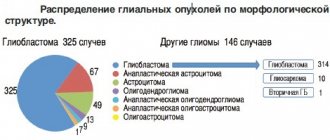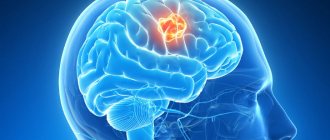Ischemic stroke
Treatment of the consequences of ischemic stroke can be divided into several areas:
- Restoration of movement (sessions with a physical therapist, aquatherapy, exercises on simulators, use of modern techniques: Bobath therapy, Exarta, PNF method);
- Returning independence in everyday life (sessions with an ergotherapist in a specially equipped training apartment);
- Restoration of speech and swallowing;
- Drawing up a menu with the recommendations of the attending physician;
- Blood pressure control and drug therapy;
- Hygiene procedures (including ostomy care and ostomy removal);
- Symptomatic treatment (prevention or treatment of bedsores, pain relief, etc.);
- Restoring control of the pelvic organs;
- Treatment of depression, help from a psychologist.
The rehabilitation program is carried out in three stages.
The first stage begins in the first days after an ischemic stroke. The possibilities for active rehabilitation are limited, since the patient is in bed and inactive. The patient is turned over, massaged, and breathing exercises are performed.
It is important to communicate with the patient, even if his own speech is impaired or he cannot respond. Speech perception affects the functioning of functional areas of the brain and has a positive effect on the emotional and physiological state of a person.
The second stage lasts up to several months after the stroke. It can take place either directly in a hospital or in a specialized rehabilitation center. During this period, massage, therapeutic exercises, and physiotherapy are prescribed. Specialists work on speech and cognitive functions (memory, thinking, imagination). This stage can last up to six months: it all depends on the severity of the stroke.
In the late, third, rehabilitation period, active methods are used to restore functions and skills. Fine motor skills and self-care skills are restored. It is also important to develop the patient’s commitment to rehabilitation measures and a positive attitude.
In some cases, one or two courses of rehabilitation are sufficient (the patient is discharged with detailed recommendations and a set of exercises to be performed at home).
deals with treatment after ischemic cerebral stroke. Each specialist conducts an individual examination of the patient and sets time-bound and achievable goals. Team members interact and exchange information to ensure that rehabilitation is effective.
What types of strokes are there?
Stroke is classified into hemorrhagic and ischemic. Hemorrhagic stroke is characterized by rupture of a vessel and bleeding into the brain. An ischemic stroke is characterized by disruption of blood circulation to an area of the brain due to a blockage or narrowing of an artery in the brain.
The most common ischemic stroke (infarction) of the brain - 85% of cases, hemorrhagic stroke occurs in 15% of cases. Strokes can be caused by several reasons:
- formation of thromboembolism in heart diseases;
- acute circulatory disorders in the cervical and large cerebral arteries;
- disturbance of blood circulation in the small arteries of the brain during the acute course of the process.
Differences in treatment
Ischemic stroke is mainly caused by clots blocking the arteries, and treatment involves removing the clot and preventing new clots from forming with medication. Removing the blood clot will help restore tissue nutrition and prevent the development of necrosis. When treating ischemic stroke, the following actions are carried out:
- neuroprotective therapy;
- improving blood supply to brain tissue.
The problem with hemorrhagic stroke is mostly neurosurgical. Basic therapy allows you to maintain the vital functions of the patient’s body; differentiated therapy is also used. At the Yusupov Hospital, neurosurgeons perform operations to remove blood clots and brain hematomas. Surgical treatment of hemorrhagic stroke depends on the size of the hematoma - this can be a puncture operation or open surgical treatment. Hematoma removal is also performed using the video endoscopic method - low-traumatic removal of hematomas of any size. If there are contraindications to surgery, only drug treatment and patient monitoring are performed.
Patients who have suffered a stroke undergo rehabilitation in the rehabilitation department of the clinic. Qualified medical personnel help restore important functions - motor, speech, and other partially lost brain functions. To make an appointment with a neurologist and rehabilitation specialist, please call.
Classification of strokes
Strokes are classified according to the causes of circulatory disorders and the duration of neurological symptoms. At the Yusupov Hospital, the patient will undergo a diagnostic examination, which will allow the type of stroke and the area of brain damage to be very quickly and accurately determined. When a patient is admitted to the clinic, a number of studies are carried out as prescribed by the doctor:
- MRI – magnetic resonance imaging;
- CT – computed tomography;
- Doppler ultrasound;
- cerebral angiography.
Classification of ischemic stroke (infarction) of the brain:
- hemorheological blockage of cerebral vessels. This condition develops with increased blood clotting and platelet aggregation;
- embolic stroke. Occurs in 20% of cases of ischemic stroke, develops when an artery is blocked by emboli (intravascular substrates) that enter small vessels from larger blood vessels;
- atherothrombotic stroke. Found in 50% of patients with ischemic stroke. A blood clot forms at the site of the atherosclerotic plaque, leading to blockage of the vessel;
- lacunar stroke. Arterial hypertension leads to the development of atherosclerosis, which causes narrowing of small arteries and reduced blood flow to areas of the brain. Occurs in 25% of cases;
- hemodynamic stroke. The pathological condition is caused by a sharp narrowing of a large vessel in the brain due to a drop in blood pressure during heart failure. Blood flow to a part of the brain stops, and an ischemic stroke develops.
Classification of hemorrhagic strokes:
- an outpouring of blood when a vessel ruptures in the brain tissue - parenchymal hemorrhage;
- formation of hematoma in the ventricles of the brain - intraventricular hemorrhage;
- hemorrhage into the cavity between the pia mater and the arachnoid membrane is called subarachnoid;
- Epidural, subdural and mixed forms of hemorrhages are quite rare.
Classification according to the duration of neurological symptoms:
- minor stroke – symptoms manifest from one day to three weeks. Recovery from one day to three weeks;
- transient ischemic attack - symptoms last for about a day, recovery within a day;
- Completed ischemic stroke – symptoms of the disease have been observed for more than three weeks, recovery does not occur for more than three weeks.
The comfort of the room is of great importance for a patient admitted after a stroke. At the Yusupov Hospital, patients are housed in superior wards, and the patient is provided with all the necessary hygiene items. The air in the room is purified, and the air conditioner works in hot weather - this allows patients to feel comfortable.
Cerebral edema from stroke and its features
The edematous condition is associated with quite serious consequences that may not appear immediately after a stroke. Depending on the location of the lesion, the degree of consequences and dysfunction of internal organs, the central nervous system, and the brain is determined.
Without rapid remission, which occurs thanks to good health and comprehensive rehabilitation, this condition can provoke irreversible consequences.
A severe intracranial complication associated with disruption of the central nervous system provokes the following consequences:
- distorted facial expressions;
- chronic headaches;
- limited movement;
- weakening of the sensory organs;
- deterioration of mental abilities.
After a stroke and cerebral edema, older people need to be re-taught to live and perform the usual activities for each person. To do this, it is necessary to provide him with complete rehabilitation, surround him with attention and care, and guarantee targeted medical care.
Reasons for development
Disruption of blood microcirculation in brain tissue stimulates the formation of a state of oxygen starvation.
This leads to cell necrosis, and intracellular fluid enters the cavity of the free space of the skull; brain edema can be caused by a number of reasons:
- stroke and fluid accumulation in the localization of nerve tissue;
- surgery with edema provoking coma;
- alcohol dependence and accumulation of toxic substances in tissues;
- a specific reaction of the body to a specific allergen.
Cerebral edema occurs in people of different ages, but those at risk are those whose age has exceeded 60-65 years. That is why it is important to organize constant supervision for an elderly relative with poor health, conduct regular medical examinations and strictly monitor his well-being.
Care and rehabilitation
To create optimal conditions for recovery after a stroke, it is better to choose a private boarding house for the elderly in the Moscow region. Specialized institutions provide recovery after timely identified cerebral edema, which helps minimize health consequences. Targeted and specific care ensures that negative impacts are reduced and conditions are created to restore the elderly person’s well-being.
Clinical picture
The cause of intense headaches with cerebral edema is an increase in pressure inside the skull due to an increase in the volume of organ tissue.
The appearance of swelling can also appear on other parts of the body, on the face or limbs, as a reaction of the body to compensate for pressure.
Brain swelling is suspected if the following signs appear:
- convulsive syndrome;
- complete or partial amnesia;
- stupor, other disorder of consciousness, coma;
- inability to control the correct respiratory rhythm, shortness of breath;
- dysfunction of orientation in time and space;
- disorganization or loss of sensory organs (partial or complete);
- attacks of vomiting and nausea not related to the functioning of the digestive system;
- severe headaches with progressive intensification.
Reference! Cerebral edema reaches its peak value after 24 hours from the moment of the attack. Doctors are not always able to provide timely assistance with rapid cerebral edema, which is why deaths are so often recorded.
Diagnostic methods
Doctors check for neurological disorders and intracranial pressure to make the correct diagnosis.
The most accurate way to determine the presence of swelling is CT and MRI.
Further measures to examine patients include a general blood test, blood pressure measurement, and coagulogram. If the patient has high blood pressure, he is given inhibitors or beta blockers.
A set of measures for hardware diagnostics of cerebral edema:
- spinal puncture, ECG and other methods;
- Doppler ultrasound;
- cerebral angiography;
- MR angiography and tomography;
- CT scan;
- inpatient examination;
- laboratory tests based on blood test results;
- regular use of tests, visual observation;
- collection of data on diseases suffered by the patient.
Based on the above methods, the doctor will learn the following information to determine the degree and nature of cerebral edema:
- condition of blood vessels and brain tissue;
- volume of organ damage;
- type and nature of edema.
Kinds
There are two main types:
- Vasogenic - accumulation of fluid in the intercellular zone;
- Cytotoxic - swelling of the tissue cells themselves.
If the permeability of the walls of blood vessels is impaired, a person may partially lose the mobility of a part of the body, this is called paresis. In more severe forms, the patient may fall into a coma or suffer from paralysis of the limbs.
Types of cerebral edema depending on the extent of organ tissue involvement in damage:
- generalized - covers both hemispheres;
- diffuse - only one of the hemispheres;
- local - occurs with a clear location of damage only in the area of damaged tissue.









